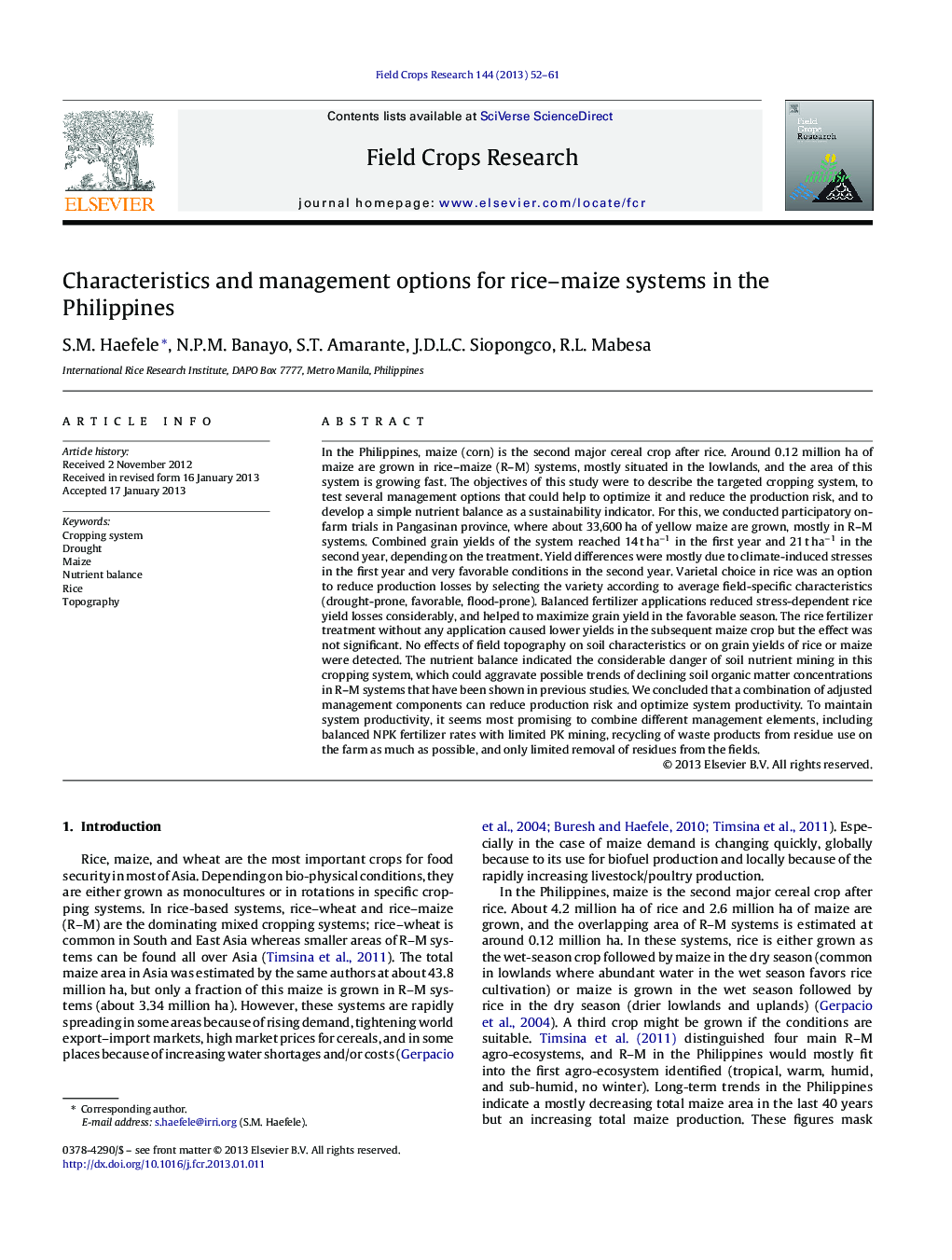| کد مقاله | کد نشریه | سال انتشار | مقاله انگلیسی | نسخه تمام متن |
|---|---|---|---|---|
| 4510225 | 1624719 | 2013 | 10 صفحه PDF | دانلود رایگان |

In the Philippines, maize (corn) is the second major cereal crop after rice. Around 0.12 million ha of maize are grown in rice–maize (R–M) systems, mostly situated in the lowlands, and the area of this system is growing fast. The objectives of this study were to describe the targeted cropping system, to test several management options that could help to optimize it and reduce the production risk, and to develop a simple nutrient balance as a sustainability indicator. For this, we conducted participatory on-farm trials in Pangasinan province, where about 33,600 ha of yellow maize are grown, mostly in R–M systems. Combined grain yields of the system reached 14 t ha−1 in the first year and 21 t ha−1 in the second year, depending on the treatment. Yield differences were mostly due to climate-induced stresses in the first year and very favorable conditions in the second year. Varietal choice in rice was an option to reduce production losses by selecting the variety according to average field-specific characteristics (drought-prone, favorable, flood-prone). Balanced fertilizer applications reduced stress-dependent rice yield losses considerably, and helped to maximize grain yield in the favorable season. The rice fertilizer treatment without any application caused lower yields in the subsequent maize crop but the effect was not significant. No effects of field topography on soil characteristics or on grain yields of rice or maize were detected. The nutrient balance indicated the considerable danger of soil nutrient mining in this cropping system, which could aggravate possible trends of declining soil organic matter concentrations in R–M systems that have been shown in previous studies. We concluded that a combination of adjusted management components can reduce production risk and optimize system productivity. To maintain system productivity, it seems most promising to combine different management elements, including balanced NPK fertilizer rates with limited PK mining, recycling of waste products from residue use on the farm as much as possible, and only limited removal of residues from the fields.
► The analysis of the rice–maize system in Pangasinan, Philippines, showed the enormous potential to improve productivity of this system.
► Combined grain yields reached 14 t ha−1 in the first year and 21 t ha−1 in the second year, whereas current system yields are usually below 10 t ha−1.
► The results showed that balanced fertilizer applications can reduce stress-dependent rice yield losses, and maximize yields in good years.
► By selecting the variety according to field-specific risks (drought-prone, favorable, flood-prone) production losses can be minimized.
► The study indicated that to avoid soil nutrient mining combining integrated nutrient management and careful residue management will be needed.
Journal: Field Crops Research - Volume 144, 20 March 2013, Pages 52–61